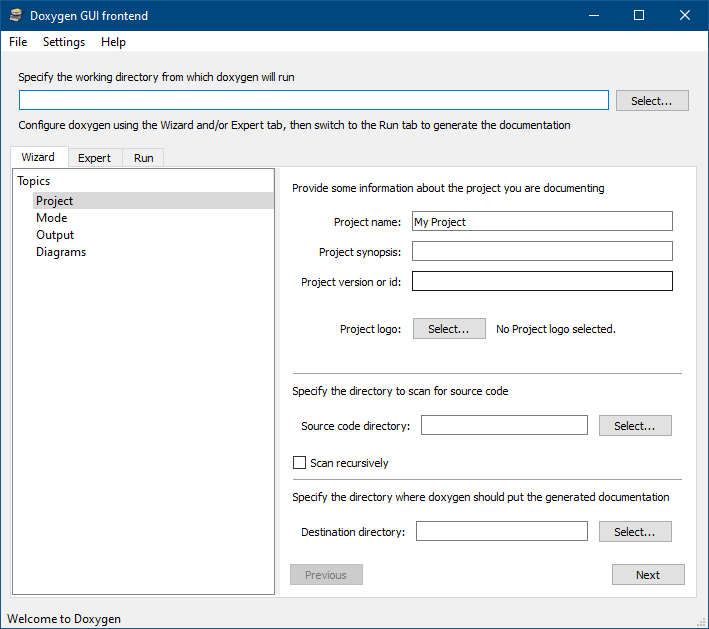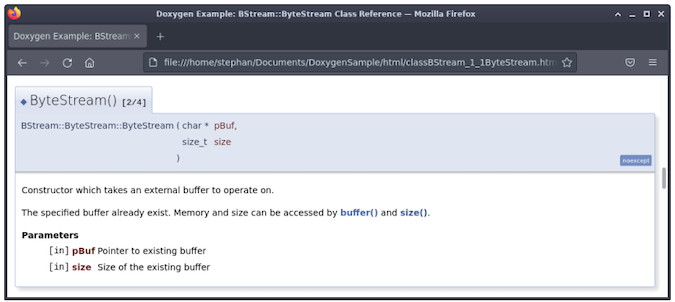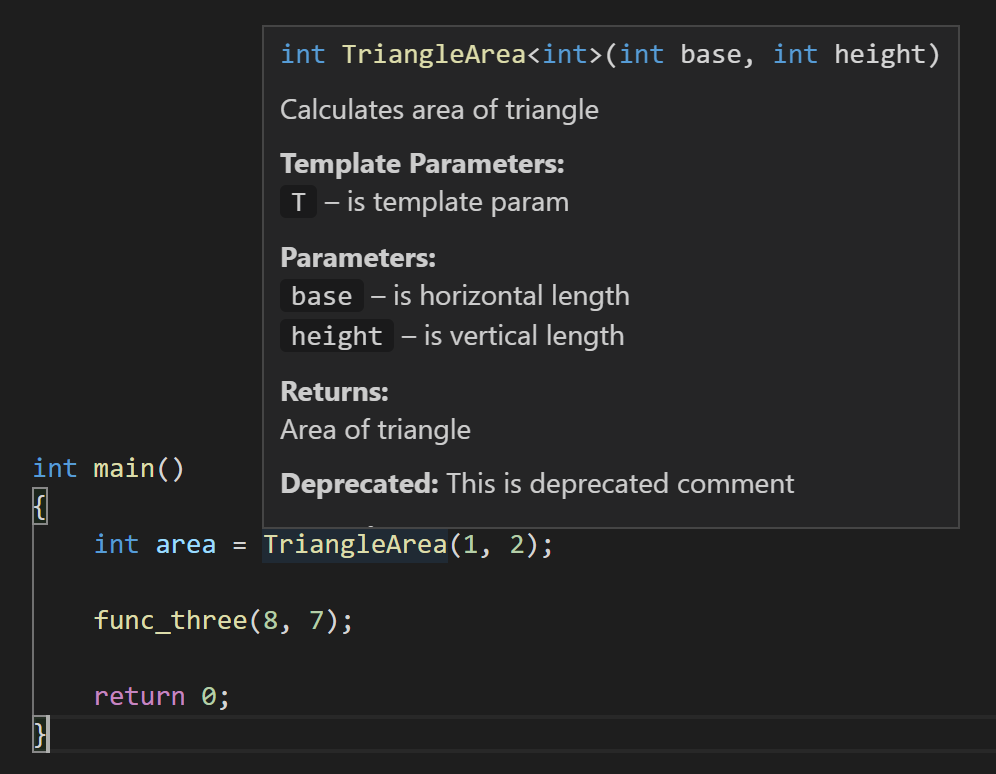

See section Special Commands for detailed information about these and many other commands. \interface to document an IDL interface.\var to document a variable or typedef or enum value.Here the special command \class is used to indicate that the comment block contains documentation for the class Test. For instance, if you want to document the class Test in the example above, you could have also put the following documentation block somewhere in the input that is read by doxygen: Structural commands (like all other commands) start with a backslash ( \), or an at-sign ( if you prefer JavaDoc style, followed by a command name and one or more parameters. The price you pay for not putting the documentation block before (or after) an item is the need to put a structural command inside the documentation block, which leads to some duplication of information. Doxygen allows you to put your documentation blocks practically anywhere (the exception is inside the body of a function or inside a normal C style comment block). For documenting a file this is even required since there is no such thing as "in front of a file". Although this is often comfortable, there may sometimes be reasons to put the documentation somewhere else. So far we have assumed that the documentation blocks are always located in front of the declaration or definition of a file, class or namespace or in front or after one of its members. Furthermore, the structural commands mentioned in the next section (like \class) are ignored inside these comment blocks. They cannot be used to document files, classes, unions, structs, groups, namespaces and enums themselves. Warning: These blocks can only be used to document members and parameters. * The documentation block cannot be put after the enum! For this purpose you should put an additional < marker in the comment block. If you want to document the members of a file, struct, union, class, or enum, and you want to put the documentation for these members inside the compound, it is sometimes desired to place the documentation block after the member instead of before. As a compromise the brief description could be placed before the declaration and the detailed description before the member definition. This keeps the header file compact, and allows the implementer of the members more direct access to the documentation. This way the documentation can be placed in the source file instead of the header file. Unlike most other documentation systems, doxygen also allows you to put the documentation of members (including global functions) in front of the definition. * a normal member taking two arguments and returning an integer value.

* A more elaborate description of the destructor. * A more elaborate description of the constructor. If you enable this option and want to put a dot in the middle of a sentence without ending it, you should put a backslash and a space after it. To enable this behaviour you should set JAVADOC_AUTOBRIEF to YES in the configuration file. This is not according the JavaDoc specification however, where the first sentence of the documentation block is automatically treated as a brief description. Both the brief and the detailed descriptions are optional for the Qt style.īy default a JavaDoc style documentation block behaves the same way as a Qt style documentation block. By default the brief descriptions become the first sentence of the detailed descriptions (but this can be changed by setting the REPEAT_BRIEF tag to NO). The brief descriptions are included in the member overview of a class, namespace or file and are printed using a small italic font (this description can be hidden by setting BRIEF_MEMBER_DESC to NO in the config file). The one-line comments contain a brief description, whereas the multi-line comment blocks contain a more detailed description. Virtual void testMeToo(char c1,char c2) = 0 įor the corresponding HTML documentation that is generated by doxygen.

\sa Test(), ~Test(), testMeToo() and publicVar() ! A normal member taking two arguments and returning an integer value. A more elaborate description of the constructor.Ī more elaborate description of the destructor.


 0 kommentar(er)
0 kommentar(er)
